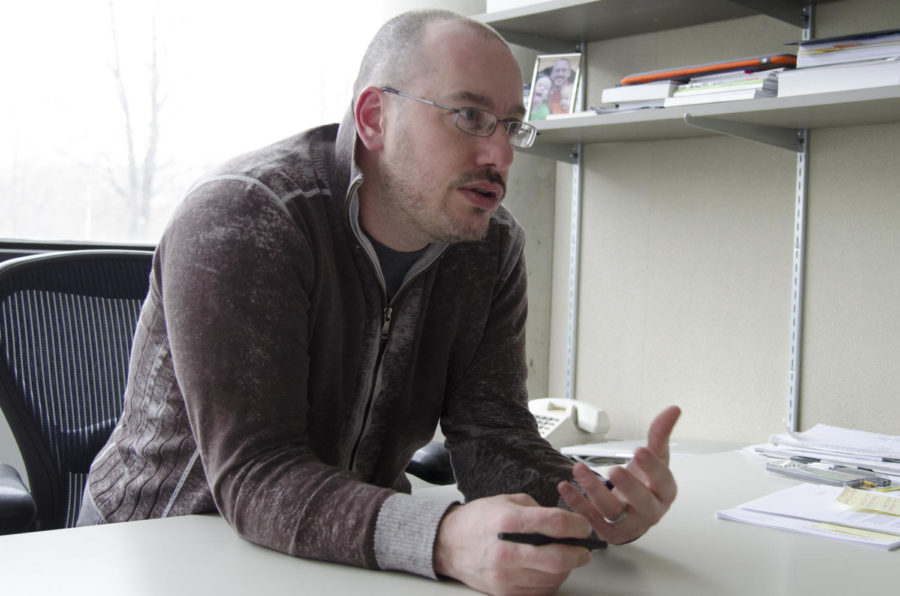3-D printing emerges at Iowa State
March 5, 2013
The enhanced use of rapid prototyping, most notably by means of a $170,000 3-D printer, has aided ISU students in design-based projects.
Rapid prototyping, also simply known as 3-D printing, “is a detailed three-dimensional visualization of the product, object or component that you’re working on,” said David Ringholz, associate professor and chair of the industrial design department at Iowa State.
Depending on the type of machine, rapid prototype machines can create products consisting of materials from paper to metal.
In the case of Iowa State’s newest and biggest Objet 3-D printer, located in Howe Hall, the use of polymers and plastics play a key role in creating finished products.
Also, as a result, a wide variety of products can be created due to the adaptability of these polymers and plastics.
“If I wanted to make a model of a pair of glasses and have part of it soft, part of it clear, and part of it hard, I could do that all in one shot on this machine,” Ringholz said, exemplifying how the printer can create products with multiple parts and compositions.
The printer, which at the time of purchase two years ago was only the second of its kind in North America, is both useful in its capacity as well as how it is also beneficial for students.
“This is important for an industrial design student in that you can get custom properties out of materials; you can get custom colors out of your materials,” Ringholz said.
Ringholz also noted how rapid prototype machines, including smaller-scale machines found at the Design building, can create better models often used in the preliminary processes of design-based projects and eliminate time-consuming steps.
“Before 3-D printing was available to design students and engineering students, we had to do a computer model and a rendering and just simulate how it would be,” Ringholz said in regards to the deficiencies of model-making in the past.
To create these 3-D print products at Iowa State, though, some knowledge of the computer program SolidWorks is required.
Students can accustom themselves to this software in the classroom in courses ranging from intermediate to advanced levels.
“We teach the computer modeling in class. We use the printer as part of the class. So, it’s actually an assignment to take a part or product, model one of the parts, and print it out and put it back together,” Ringholz said. “Those assignments are built into the curriculum of some entry level computer classes.”
Morgan Hardy, freshman in electrical engineering, has been introduced to the printer in his Electrical Engineering 285 course.
“Currently, my electrical engineering class is looking into programming for 3-D printing and creating programs that will allow us to print with it,” Hardy said.
He said 3-D printing, a relatively new form of technology, will be a new experience for him.
“I had kind of heard of it but never really knew what it did,” Hardy said. “Being able to program in 3-D is a lot different than most other things, and printing in any 3-D form can be difficult, but it’ll be interesting to see how it goes.”







